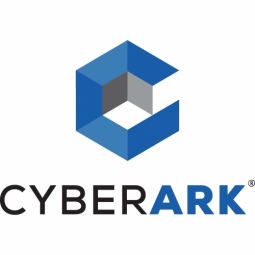公司规模
Large Corporate
产品
- CyberArk PAS
- Privileged Session Manager (PSM)
技术栈
- Cloud
实施规模
- Enterprise-wide Deployment
影响指标
- Cost Savings
- Customer Satisfaction
- Productivity Improvements
技术
- 网络安全和隐私 - 身份认证管理
- 网络安全和隐私 - 安全合规
适用行业
- Software
- Professional Service
适用功能
- 商业运营
服务
- 系统集成
- 培训
关于客户
The customer is a large organization with a complex IT environment that is expanding into the cloud. They have a significant number of sysadmins who manage their infrastructure. The organization was previously struggling with over-privileged access and lacked proper auditing and control mechanisms. They needed a solution to streamline and secure their privileged account management processes.
挑战
The organization was facing challenges in managing its privileged accounts in a complex and growing environment, especially as it moved into the cloud. Previously, the infrastructure management was chaotic, with sysadmins having excessive privileges and access to everything all the time. This lack of control and auditing posed significant security risks and inefficiencies.
解决方案
The organization implemented CyberArk PAS to manage their privileged accounts. They utilized features like Privileged Session Manager (PSM) for auditing and dual control and just-in-time access to ensure least privilege. The implementation process was smooth, and user adoption was high. The recent user interface upgrade made the system more intuitive and user-friendly, further enhancing the user experience. The organization was able to standardize their processes and policies effectively using CyberArk's platforms.
运营影响
数量效益

Case Study missing?
Start adding your own!
Register with your work email and create a new case study profile for your business.
相关案例.
Case Study
SET Creative Ditches Google Vault for Datto Backupify
When Kienholz first started at SET, the staff was using Microsoft Outlook for email with no form of data backup. It became apparent that something needed to change as the staff was often burdened with trying to recover emails from departed employees. Kienholz transitioned the team to Google’s Gmail and implemented Google Vault for backup purposes. While SET employees quickly adjusted to Gmail, which many use for personal email, the same could not be said for Google Vault. “Unlike most Google products, Vault was not user friendly at all. It’s very hard to search for items. We never really figured out how to do a restore either,” explained Kienholz. Due to SET’s work with high-profile brands, projects often go through many rounds of revisions right down to the eleventh hour. This means that every bit of information - especially data living in project managers’ emails - is crucial to delivering clients a polished design at deadline.
Case Study
Infosys achieves a 5–7 percent effort reduction across projects
Infosys, a global leader in consulting, technology, and outsourcing solutions, was facing significant challenges in application development and maintenance due to its distributed teams, changing business priorities and the need to stay in alignment with customer needs. The company used a mix of open source, home-grown and third-party applications to support application development projects. However, challenges resulting from distributed teams using manual processes increased as the company grew. It became more and more important for Infosys to execute its projects efficiently, so they could improve quality, reduce defects and minimize delays.
Case Study
Arctic Wolf Envelops Teamworks with 24x7 Cybersecurity Protection and Comprehensive Visibility
Teamworks, a leading athlete engagement platform, faced rising cyberthreats and needed enhanced visibility into its network, servers, and laptops. With software developers connecting from all over the world, the company sought to improve its security posture and position itself for future growth. The company had a secure platform but recognized the need for a more proactive solution to identify gaps within its technology infrastructure. Data exfiltration and malicious access were top concerns, prompting the need for a comprehensive security upgrade.
Case Study
Sawback IT and Datto Save Client From a Costly Mistake
Ballistic Echo, a software development house, faced a critical challenge when human error led to the deletion of thousands of lines of unique code. This incident occurred before the code was pushed to source control, resulting in significant loss of time, revenue, and work. The previous file-level backup solution they used was slow and inefficient, making it nearly impossible to manually recreate the lost work. The need for a more reliable and efficient business continuity solution became evident to avoid such disasters in the future.
Case Study
Opal Helps Customers Shine Thanks to Datto
SP Flooring & Design Center faced a ransomware attack that encrypted and locked their files. The attack was initiated through a compromised service account set up by an outside vendor. The ransomware infection was isolated quickly, but there was a concern about the extent of the data at risk. The company had backups in place but was unsure of how much information was compromised. The situation required immediate action to prevent further damage and restore the affected data.
Case Study
Zapier Aggregates Multiple Analytics in a Single Dashboard with the New Relic Platform
Zapier, a company that enables non-technical users to push data between hundreds of web applications, was facing a challenge in automating and provisioning servers for optimal performance. The company's environment consisted of 50 Linux servers on the Amazon Elastic Compute Cloud (EC2), a Django application split across several servers, and a backend consisting of a dynamic number of celery task workers fed by messages published to a RabbitMQ cluster. They also maintained a number of internal web services on nginx in front of Gunicorn and Node.js processes. Redis handled simple key and value stores, with logging handled by Graylog2 and ElasticSearch. However, they realized that no level of automation would be sufficient without an effective monitoring solution in place. They needed a tool that could provide immediate alerts when something was breaking and could be easily implemented into their environment.







